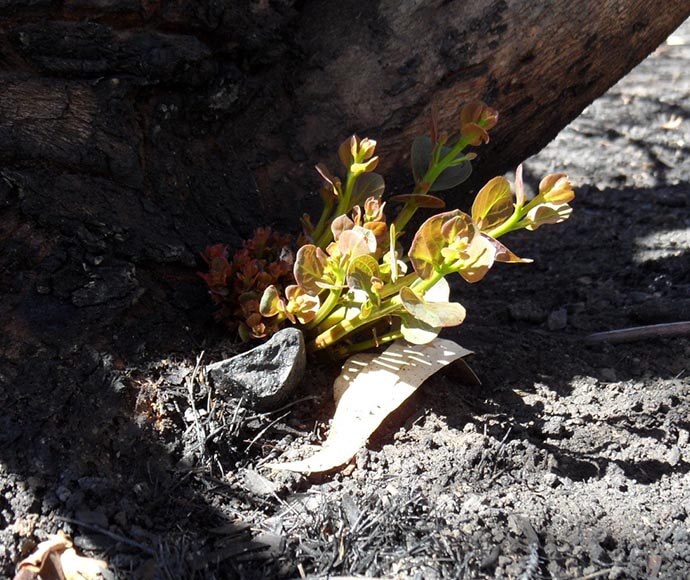Altering the fire regime beyond the adapted thresholds can disrupt ecosystems, adversely affecting their health, diversity, structure and distribution.
While committed to carrying out hazard reduction burning as a public safety tool, the Department of Climate Change, Energy, the Environment and Water recognises the need to minimise associated adverse impacts on biodiversity and to maintain areas that are not subject to increasing fire frequency through hazard reduction burning.
The impact of changes to fire regimes can be specific to a location, species or ecological community. The department fire managers are faced with a complex challenge in managing fire regimes to maintain the health and resilience of these fire adapted ecosystems while protecting and reducing risk to life and property.
What are we doing?
When planning fire management activities, the department fire managers use biodiversity thresholds based on plant species functional types and life history to identify the domain of acceptable fire intervals for broad vegetation types.
Currently, this is restricted to considering the adverse impacts of fire frequency on plant species, but we aim to extend this to incorporate all other components of the fire regime.
The NSW Flora Fire Response Database is a collation of information on plant species' fire response and related life history traits. It is used to help to determine appropriate fire management guidelines for species or vegetation communities.
The department and its research partners are now working on developing a new database, reviewing and compiling data for plant fire response traits across all components of the fire regime. This research will characterise the sensitivities of plants and ecological communities (with a strong focus on listed threatened entities) to all components of the fire regime.
The work will allow better consideration of alternative fire management scenarios for threatened species and ecological communities. The research will also estimate new thresholds of potential concern for different components of the fire regime to inform fire management for conservation of threatened and non-threatened biodiversity.
Further research is also required to better understand:
- suitable fire regimes that will allow the long-term persistence of threatened and non-threatened species and ecological communities
- how fire regime components, including fire season and severity, affect biodiversity
- the responses of species to fire based on their life cycle and vital attributes (e.g. killed by fire or able to resprout or persist, time taken to mature and successfully reproduce after fire, how fires affect the persistence of seeds in the soil and canopy)
- the impacts of fire regimes on fauna, and the interaction between fire regimes and other stresses, such as predation, including by introduced feral predators such as foxes and cats
- the impacts of various fire regimes on specialised flora and fauna habitat values, such as tree hollows and logs, and peat bogs
- the impacts of various fire regimes on feral predator or grazer population size and their impacts, particularly on threatened species
- the importance of long unburnt sites for conserving biodiversity and habitats
- the effect of fire size and patchiness on post-fire recovery of plants and animals.

Recovery following the Warrumbungles fire in 2013: white gum epicormic growth.